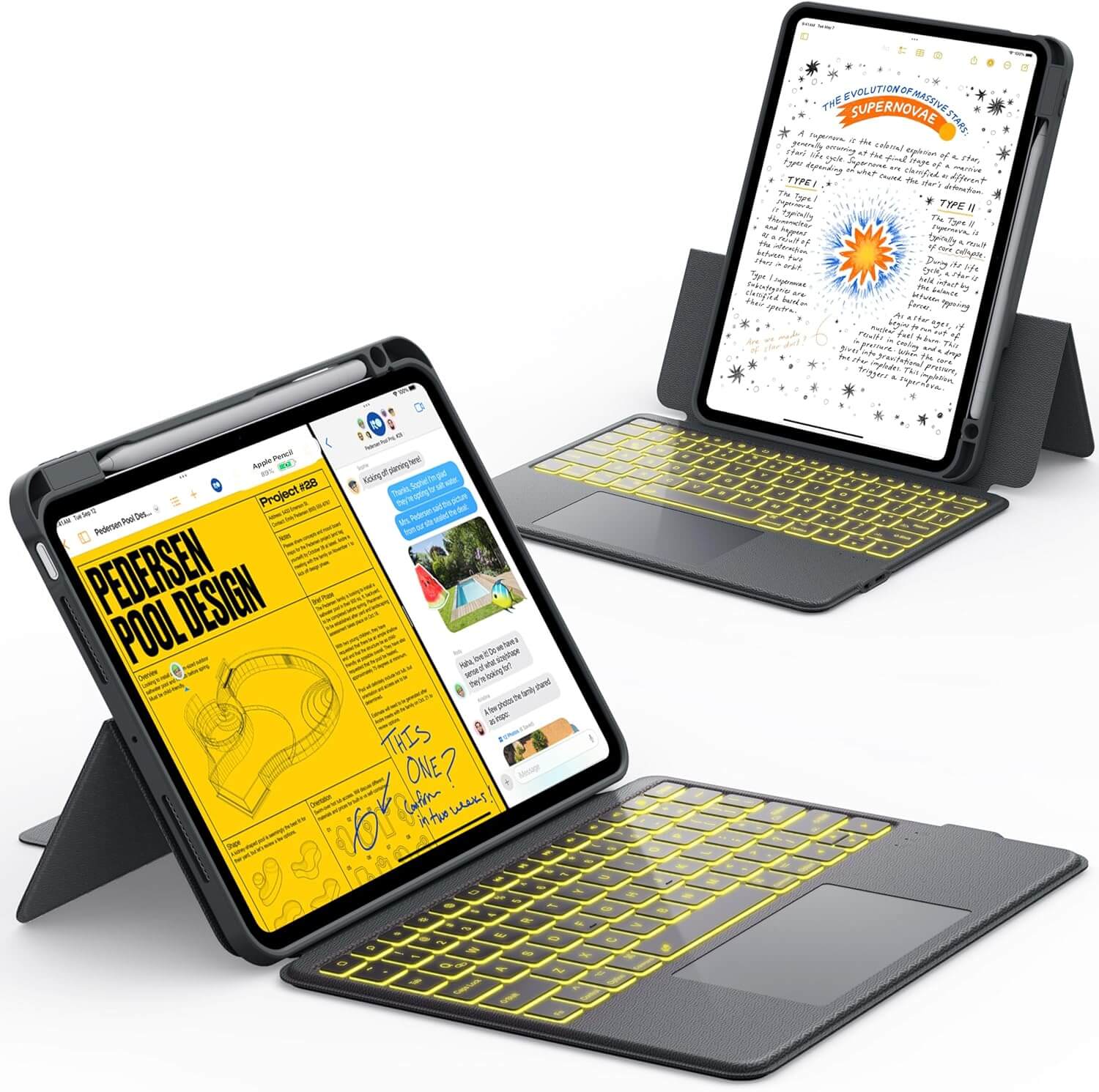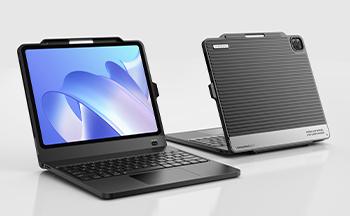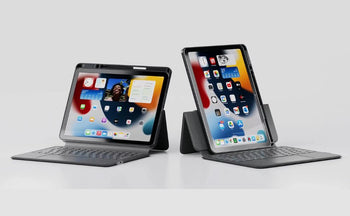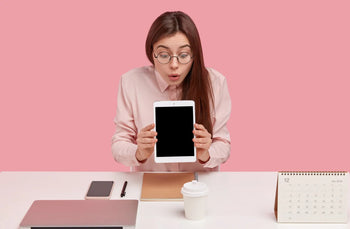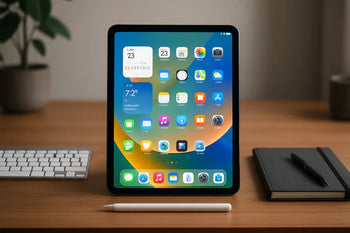Is the iPad screen shutting off in the middle of a movie, recipe, or meeting? It happens often, and it can be more than a minor annoyance.
To keep an iPad from turning off, go to Settings, open Display and Brightness, tap Auto-Lock, and set it to Never. This quick step stops the screen from going dark on its own.
Still, there are times when the iPad may not stay awake, even with the right settings. Battery issues, app use, or specific modes can affect how long the screen stays on.
This guide explains why it happens and shows clear steps to keep the screen active.
Learn how to adjust settings, keep the display on during extended tasks, and resolve common issues.
Quick Insights 💡:
- Adjust Auto-Lock settings in Settings > Display & Brightness
- Set Auto-Lock to “Never” for continuous use
- Keep the iPad charged to avoid power-related shutdowns
- Update iPadOS for bug fixes and performance
- Check for battery health issues if it powers off unexpectedly
Understanding Why Your iPad Turns Off
An iPad may power down for different reasons, often linked to built-in settings, power use, or display protection.
Knowing these causes helps users adjust their devices to stay on longer without draining the battery or harming the screen.
Auto-Lock Feature Explained
The auto-lock feature controls how long the iPad screen stays on when not in use. By default, many iPads are set to lock after a short period, often 2 minutes. This setting saves power and prevents accidental touches.
Users can change this in Settings > Display & Brightness > Auto-Lock. Options usually range from 30 seconds up to “Never.” Choosing “Never” keeps the screen on until the user manually locks it, but this can shorten battery life if the screen remains active for extended periods.
For people who read, cook with a recipe app, or give a presentation, extending the auto-lock time makes sense.
However, leaving it on “Never” should be limited to short tasks. A balanced choice, like 5 or 10 minutes, works best for most situations.
Battery Life and Power Management
Battery health plays a big role in why an iPad may shut off. If the battery is weak, the device may power down even when it still shows some charge remaining. Older iPads are more likely to exhibit this issue than newer ones.
Apple includes tools to manage battery use. In Settings > Battery, users can see which apps consume the most power.
Closing or limiting heavy apps, such as games or streaming services, helps the iPad last longer without needing to shut down.
Some iPads also have Low Power Mode. This reduces background activity and screen brightness, which helps prevent sudden shutdowns when the battery is low.
If an iPad keeps turning off randomly, updating the software or checking the battery health at an Apple Store may be needed.
Screen Burn-In Risks
Screen burn-in occurs when an image remains on the screen for an extended period, leaving a faint residual mark.
While iPads use LCD or newer display technology that is less prone to burn-in than older screens, it can still occur with static images.
To reduce this risk, the iPad uses auto-lock and screen dimming. These features prevent the display from holding the same image for hours.
For example, leaving a paused video or a game menu open without moving can slowly wear out the pixels.
Practical steps include:
- Keeping the auto-lock active at a reasonable time.
- Lowering brightness when reading or leaving the device idle.
- Avoid long static displays, such as dashboards or charts.
These habits protect the screen and also help extend battery life.
Also Read: How to Fold iPad Case: Easy Steps for Every Type of Cover
How to Keep iPad from Turning Off – Step by Step
An iPad may turn off its screen too quickly if the auto-lock setting is short, the battery runs low, or the device overheats.
Software issues or poor battery health can also cause the device to shut down.
Adjusting settings and following a few simple habits can keep the iPad screen active and prevent unwanted interruptions.
Method 1 – Adjust Auto-Lock Settings
The Auto-Lock setting controls how long the iPad screen remains on when it is not in use. By default, this is often set to a few minutes to save power. Changing this setting can stop the screen from going dark too quickly.
To adjust it, open Settings, tap Display & Brightness, then select Auto-Lock. A menu will appear with time options, usually ranging from 30 seconds to 5 minutes, plus a Never option.

Choosing Never keeps the screen on until the user locks it manually. This is useful for tasks like reading recipes, viewing instructions, or using the iPad as a display.
However, leaving the iPad on all the time can drain the battery faster. For most people, setting Auto-Lock to 5 minutes offers a balance between convenience and battery life.
Method 2 – Keep iPad Plugged In During Long Use
When the iPad is used for hours at a time, the battery may drain quickly and cause shutdowns. Keeping it plugged in during long sessions prevents this problem.
This is especially helpful when streaming movies, giving a presentation, or using the iPad as a kiosk. A constant power source ensures the screen stays on without interruptions.
It is best to use the original Apple charger or a certified alternative. A weak or inexpensive charger may not supply enough power, especially during heavy usage, such as gaming or video playback.
If the iPad is used in one place, such as on a stand or desk, leaving it connected to power is the simplest way to avoid unwanted turn-offs.
Method 3 – Update iPadOS
Outdated software can cause bugs that cause the iPad to shut down or the screen to turn off unexpectedly. Updating iPadOS helps keep the system stable and addresses known issues.
To check for updates, go to Settings > General > Software Update. If an update is available, tap Download and Install.
Updates often enhance performance, improve battery handling, and boost security. Many users notice fewer crashes or freezes after installing the latest version.
Before updating, ensure the iPad has at least 50% battery or is plugged into a charger. A stable Wi-Fi connection is also needed to download the update.
Method 4 – Check Battery Health
A weak battery can cause the iPad to shut down even when it shows a charge. Unlike iPhones, iPads do not display battery health in the settings.
Users can check battery condition through third-party apps, or by contacting Apple Support. Apple can run a diagnostic test and confirm if the battery needs replacement.
Signs of poor battery health include the iPad turning off at high percentages, charging very slowly, or draining much faster than normal.
If the battery is faulty, replacing it is the only long-term fix. Apple offers official battery replacement services, which restore normal performance and prevent random shutdowns.
Method 5 – Prevent Overheating
Heat can cause the iPad to shut down or dim the screen to protect its components. Avoiding overheating helps keep the device running smoothly.
Some simple steps include:
- Do not use the iPad under direct sunlight for long periods.
- Remove thick or heavy cases during gaming or video editing.
- Keep the iPad on a hard surface, rather than a blanket or pillow, which can trap heat.
If the iPad shows a temperature warning, let it cool down before using it again. Using it while overheated can shorten battery life and cause performance issues.
By keeping the device cool, the screen stays on longer and the iPad works more reliably.
Also Read: How To Measure iPad Size — Quick Guide for Finding the Right Case
How to Keep Your iPad On During Presentations or Readings
When someone uses an iPad for a presentation or reading, the screen turning off can interrupt focus. Adjusting a few settings helps keep the display on and prevents distractions.
The most common fix is changing the Auto-Lock setting. By setting Auto-Lock to Never, the screen will stay on until the user manually locks it. This works well for long reading sessions or when showing slides.
Another helpful tool is Guided Access. This feature keeps the iPad locked into one app and stops accidental touches from closing the presentation.
It also keeps the screen active, which is helpful when the device is being passed around or left on display.
Steps to use Guided Access:
- Go to Settings > Accessibility > Guided Access
- Turn it on and set a passcode
- Open the app you want to use
- Triple-click the Home button or Side button to start Guided Access
For those using the iPad with Apple TV or a projector, keeping the display awake avoids sudden blackouts.
This is especially important in classrooms or meetings where the audience depends on the screen staying visible.
Auto-Lock: Never vs. Guided Access
|
Method |
Best For |
Steps Needed |
|
Auto-Lock: Never |
Reading, recipes, casual viewing |
Change in Display settings |
|
Guided Access |
Presentations, shared devices |
Enable in Accessibility |
Also Read: How Old Is the iPad Air 2? And What Can You Still Use It For in 2025?
Troubleshooting If iPad Still Turns Off
If the iPad keeps shutting down, a few basic steps can help rule out simple problems. Start by checking that the device has enough charge and that the charging cable and adapter work properly. A weak or faulty power source can cause the iPad to turn off.
A soft reset often clears temporary glitches. To do this, hold the Power button and the Home button together on older models, or hold the Power button and Volume Down button together on newer models, until the Apple logo appears. This does not erase data.
If the problem continues, a full restore may help. Go to Settings > General > Reset > Erase All Content and Settings. ‘
This returns the iPad to factory condition. Back up important files first, as this step will remove all personal data.
When these steps do not fix the issue, it may be a sign of a deeper hardware or software problem. At this point, the best course of action is to contact Apple Support or visit an authorized service provider.
Quick checklist:
- Check charger and cable
- Perform a soft reset
- Restore iPad in settings
- Contact Apple if the issue remains
Conclusion
Keeping your iPad's screen active is a simple yet powerful way to enhance your productivity and enjoyment.
As we've covered, the secret to how to keep your iPad from turning off lies primarily in mastering the Auto-Lock setting and harnessing the power of Guided Access for specific tasks.
Remember the key steps: adjust your Auto-Lock timer, disable Low Power Mode for longer sessions, and use Guided Access to pin an app to the screen. Always keep an eye on your battery level and software health for optimal performance.
With these tips, you can bid farewell to frustrating mid-task blackouts and welcome a seamless, uninterrupted iPad experience.
👉 Want to keep your iPad protected while using it for long sessions? Explore Chesona’s premium iPad cases:
FAQs About How to Keep iPad from Turning Off
The iPad uses a feature called Auto-Lock to turn off the screen after a set time. Adjusting this setting and managing features like Low Power Mode lets users control how long the display stays on.
How can I stop my iPad from automatically turning off?
Go to Settings > Display & Brightness > Auto-Lock. Choose a longer time or select Never to keep the screen from shutting off on its own.
How to keep an iPad screen on all the time?
Set Auto-Lock to Never in the Display & Brightness menu. This ensures the screen stays on until the user manually presses the power button.
How to prevent your iPad from turning off?
Disable Auto-Lock by selecting Never. The device will remain on as long as it has power, but this can drain the battery faster.
How can I prevent my iPad from sleeping while I'm reading?
Increase the Auto-Lock time or set it to Never. This prevents the screen from dimming or locking while reading.
Can I keep my iPad screen on at all times?
Yes. By setting Auto-Lock to Never, the display will stay active until the power button is pressed or the battery runs out.
Does Low Power Mode prevent the iPad from shutting off?
No. Low Power Mode forces Auto-Lock to 30 seconds to save battery. To keep the screen on, Low Power Mode must be turned off.


